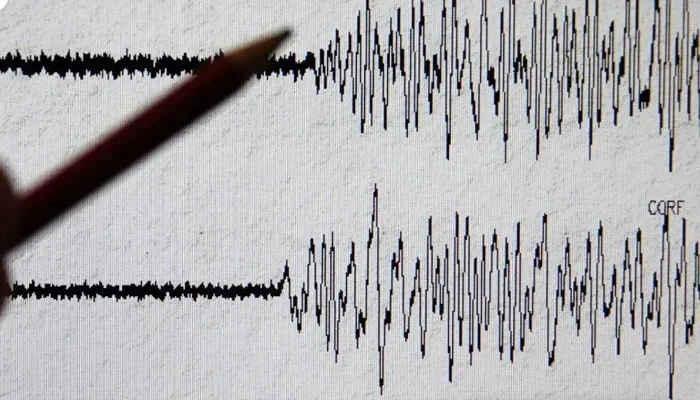A magnitude-5.0 earthquake struck northeastern Taiwan on Wednesday, the US Geological Survey reported, causing buildings to shake in the capital city of Taipei.
The quake originated at a depth of nearly 70 kilometers (43 miles) in Yilan County, situated near Taipei, according to the USGS.
Yilan fire authorities informed AFP that there were no immediate reports of damage or injuries resulting from the tremor.
“I felt the building shaking briefly when the quake hit,” stated an official at the Yilan Fire Bureau.
The National Fire Agency confirmed that there had been no reports of damage from any location on the island.
Train services, including the high-speed rail, remained unaffected by the earthquake, although Taipei’s underground metro system temporarily reduced the speed of its trains as a precautionary measure.
Taiwan is frequently subjected to earthquakes due to its geographical position on the boundary of two tectonic plates in close proximity to the Pacific Ring of Fire, which the USGS identifies as the most seismically active region globally.
The most recent major earthquake occurred in April 2024 when the island was struck by a devastating 7.4-magnitude tremor that officials described as the strongest in 25 years.
That earthquake resulted in the deaths of at least 17 people and triggered landslides, causing severe damage to buildings around Hualien.
It marked the most significant seismic event in Taiwan since a 7.6-magnitude tremor struck in 1999.
That earlier quake claimed the lives of approximately 2,400 people, making it the deadliest natural disaster in the island’s history.
Since then, Taiwan has updated and strengthened its building codes to incorporate earthquake-resistant construction techniques, such as the use of steel bars that allow buildings to sway more readily when the ground moves.
Renowned for its leading-edge technology companies, Taiwan has developed an advanced early warning system capable of alerting the public to potentially serious ground shaking within seconds.
This system has been progressively enhanced over the years to integrate new technologies such as smartphones and high-speed data connectivity, extending its reach even to some of the most remote areas of the island.



